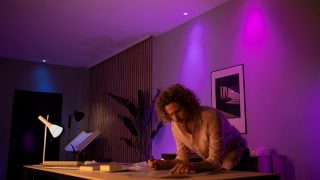Choose a bulb

LED
Bulb 115W T70 E27
- 3000K
- 1800lm
- 15000h

LED
Bulb 160W A67 E27 x2
- 6500K
- 2300lm
- 15000h

LED
Bulb 160W A67 E27
- 6500K
- 2300lm
- 15000h

LED
Bulb 145W T70 E27
- 6500K
- 2350lm
- 15000h

LED
Bulb 120W A60 E27
- 6500K
- 1800lm
- 15000h

LED
Bulb 120W A60 E27
- 3000K
- 1700lm
- 15000h

LED
Bulb 125W T70 E27
- 6500K
- 2000lm
- 15000h

Smart LED
4 inch recessed downlight 6.5W
- Full color
- Cut out Ø95-105MM
- IP20/Round/White

Smart LED
5 inch recessed downlight 10W
- Full color
- Cut out Ø120-130MM
- IP20/Round/White

Smart LED
Spot 50W PAR16 GU10
- Full color smart bulb
- Up to 400 lumens
- Easy plug and play
- Control with app or voice

Smart LED
6 inch recessed downlight 12W
- Full color
- Cut out Ø145-155MM
- IP20/Round/White

LED
Spot 50W PAR16 GU10
- 3000/4000/6500K
- 500;550;550lm
- 15000h
- Dimming
Learn more about bulbs

Right style to complete look
Enjoy iconic design that is ready for modern LED technology. With a vintage lamp that perfectly fits your personal style.

Smart lighting
Turn your everyday lighting into an extraordinary experience. Play with colours or sync your smart lights with your music and movies.

